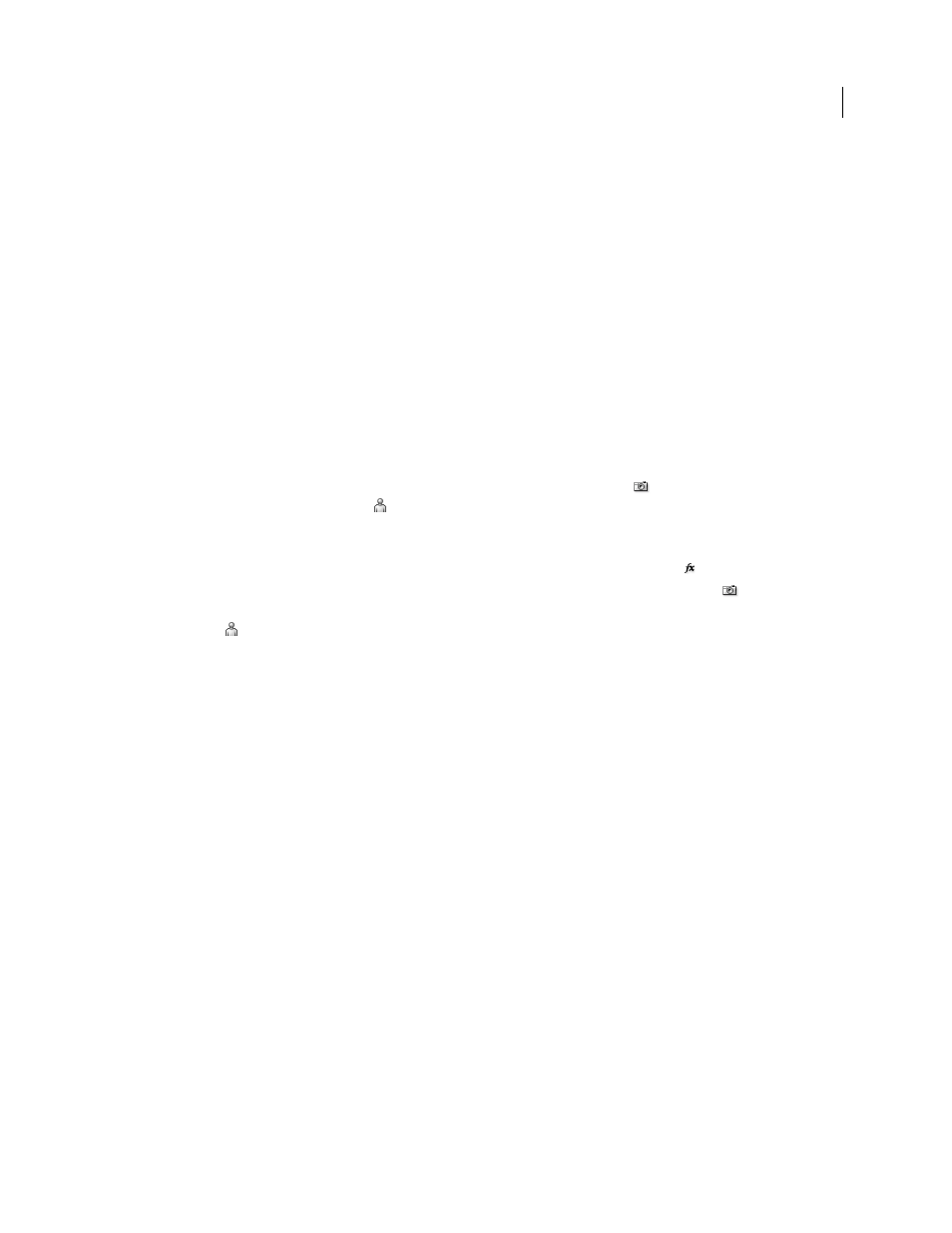Work with noise samples in grain effects – Adobe After Effects CS4 User Manual
Page 528

522
USING AFTER EFFECTS CS4
Effects and animation presets
Last updated 12/21/2009
The preview region redraws, centered in the new position.
3
To change the dimensions of the preview region, change the Width and Height values in the Effect Controls panel
to the desired size, in pixels. (Larger preview regions can result in slower rendering.)
4
Select Show Box if you want to outline the preview region in color. If you want to change the outline color, next to
Box Color do one of the following:
•
Click the color swatch and select a color in the Color Picker dialog box.
•
Click the eyedropper button, and click a color anywhere on the screen.
5
View the results:
•
To view the fine detail of the noise structure, zoom into the preview region.
•
To examine the noise in each channel independently, click the corresponding color channel icon in the
Composition panel.
•
To increase the interaction speed and RAM preview duration, use the Region Of Interest feature in the
Composition panel to reduce the area that’s processed. (See “
•
To retain an image of the current frame in its current state, click Take Snapshot
in the Composition panel. You
can then click Show Last Snapshot
to view the most recent snapshot instead of the active composition, and to
toggle between the current and previous states of the preview region. This technique is extremely useful for
evaluating subtle adjustments. (See “
•
To compare the preview region with and without the grain effect, click the Effect switch
next to the name of the
grain effect in the Effect Controls panel to temporarily disable the effect. Click Take Snapshot
in the
Composition panel, click the Effect switch again to re-enable the effect, and then click and hold down Show Last
Snapshot
to display the snapshot of the image without the effect.
Work with noise samples in Grain effects
Noise sampling is the first and most important step in removing noise from an image or in matching the noise of one
image in another image. Normally, this process is entirely automatic. For fine control, you can switch to Manual mode
and adjust the samples using the Sampling controls group in the Effect Controls panel.
A noise sample should be a solid block of uniform color that clearly displays the noise pattern present in the image.
The objective is to extract samples of pure noise, without any image features that the algorithm could misconstrue as
grain. For example, extract samples from a piece of sky, a background wall, or an area of fleshtone. All samples should
be selected from the normal range of the film, DV, or video stock. Avoid underexposed or overexposed areas lacking
in information, especially areas where pixel values have been clipped to pure black or white. Within this normal
exposure range, it’s best to select samples with various RGB values and colors—for example, one sample from a bright
area, one from a dark area, and one from an area with midtones.
The number of samples in automatic mode is high to ensure that the algorithm has enough good noise data, even if
finding good samples in a particular image is difficult. In addition, automatic mode may override the number of
samples you’ve set if the effect can’t find enough good samples. You can vary the size of the samples in either automatic
or manual mode; however, increasing sample size doesn’t guarantee better results, especially if the resulting samples
include more substantial variations in RGB values. Sample size should be reduced if a particular image doesn’t contain
sufficiently large areas of constant color values. Conversely, increasing the sample size may give better results if the
image contains large featureless areas.
